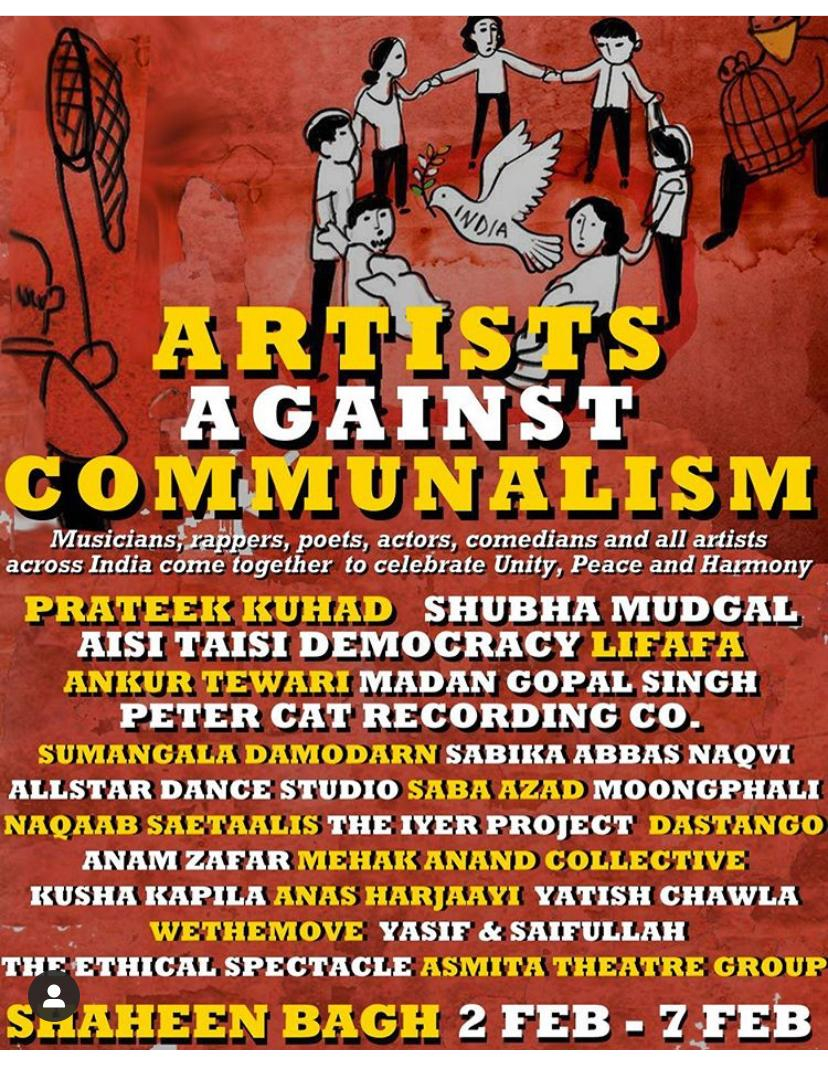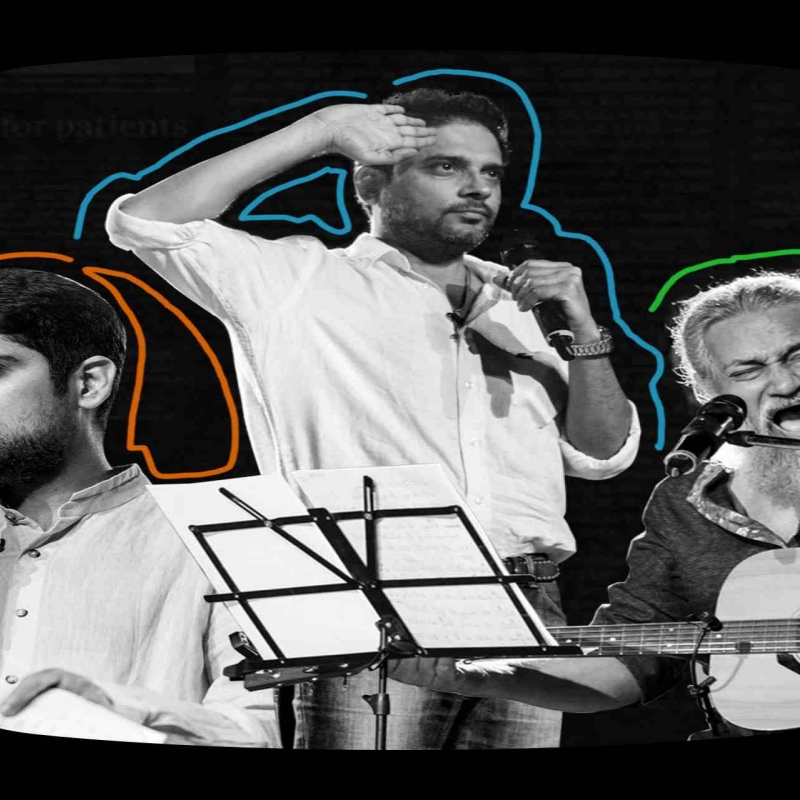In the last two decades, there has been a proliferation of bands and individuals that have used rap and rock music to point attention to political issues in different parts of the country. Sahapedia looks at the emergence of rap as a potent and popular musical form in the tradition of protest music. (Photo Courtesy: Aisi Taisi Democracy/Facebook)
This is the second article in a two-part series on protest music in India. Read the first part here.
Who am I? Who are you? Who is your grandfather?
NRC is coming to dig up all that.
Then why did we need Aadhaar and Voters ID?
Now you have to dig out your great-great-grandfather from his grave.
Do you have brains? You halfwit?
…sings Tamil rap singer Arivu in his now famous rap song ‘Sanda Seivom (We Will Fight)’.
December 15, 2019 onwards, variations of Faiz Ahmad Faiz’s ‘Hum Dekhenge’, and Shubha Mudgal’s and Madan Gopal Singh’s renditions of Sufi and Bhakti songs have reverberated through the crowds at various venues protesting the Citizenship (Amendment) Act. Be it Shaheen Bagh, Jawaharlal Nehru University or Jamia Milia Islamia University, Marine Drive in Mumbai or the Bengaluru Town Hall, artistes and musicians have been lending their voice and music as a means of creative and peaceful expression of protest.
Also see | On Songs of Protest: An Interview with Dr Sumangala Damodaran
While many of these forms have a longer history and tradition of protest music, rap has emerged as a potent and popular musical form as well. The ‘Western’ formats employed by artistes saw substantial variety, reflecting the inflexions of regional languages and local musical genres.
In the last two decades, there has been a proliferation of bands and individuals that have used Western formats of songwriting, instrumentation and presentation to point attention to political issues in different parts of the country. Raising questions of caste, state violence, poverty, unemployment and several others, these musicians articulate protest on topical issues through music that often combines Indian languages and musical forms with Western performance formats, idioms, instruments and singing styles, or employ fully Western forms of music in Indian languages.
This Indo-Western idiom has been explored in different ways to address and, in fact, confront caste questions directly. Buddhist rock band Dhamma Wings, for example, attempts to spread Buddha’s and Ambedkar’s teachings through music. The band, which sings songs mostly in Marathi, is known for songs such as ‘Jai Bhim Se (Glory be to Bhim)’ and ‘Chandanyachi Chhaya (In the Shade of the Moon)’.

In Punjab, there is whole new sub-genre of political music which calls itself Chamar Rap/Chamar Pop, with scathing assertion of Dalit identity being expressed visually and musically through music videos. Represented by singers like Roop Lal Dhir and Ginni Mahi, the songs use images of affluence, masculinity and vigour to herald the ‘arrival’ of people from the lowest castes. These images draw from those within mainstream Punjabi popular music and imbue them with political messages that challenge caste discrimination.
Related | History of Student Protests in Postcolonial India
Mahi, for example, produced ‘Danger Chamar’ after an encounter with her schoolmate who, after asking what her caste was, said that Chamars were ‘dangerous’. Mahi, who works with the idiom of the ‘danger chamar’, sings:
Hunday asley toh vad danger Chamar
(Chamars are more dangerous than firearms)
Bands or individuals that sing politics are also numerous in the northeastern states of India. Imphal Talkies and the Howlers, and Daniel Langthasa and his ‘Mr. India’ YouTube channel[1] are two examples among many. Imphal Talkies and the Howlers is a folk-rock band from Manipur, known for singing protest songs about politics, insurgency, human rights issues and racial attacks in Manipur and across the northeastern states of India. Some of their well-known songs are ‘Lullaby’, ‘Where have all the Flowers Gone’ (inspired by Pete Seeger’s song by the same name), ‘The home is burning’ and ‘Tiddim Road’.
The protest music tradition, thus, saw a revival and consolidation over the past few decades, straddling a wide range of musical genres and languages across the country. Further, somewhat like in the decades of the 1940s and the 1950s, with organisations like the Indian People's Theatre Association, it arrived on the ‘national’ stage, even as specific regional and local flavours drove a lot of the music creation.
This article is the last of a two-part series on protest music in India by Dr Sumangala Damodaran on TheWire.
Notes
[1] Daniel Langthasa rose to prominence as a part of an alt-rock/mutton rap group called Digital Suicide, whose tongue-in-cheek songs about militancy in the Northeast and ethnic bigotry and racism was received very enthusiastically in Assam.












